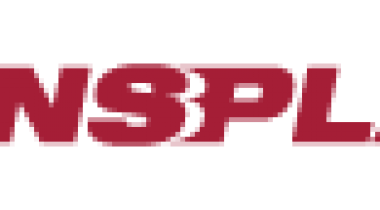SAP Transportation Management
Customer Reviews
SAP Transportation Management Reviews
Gaurav H.
Advanced user of SAP Transportation ManagementWhat do you like best?
SAP TM is best suited for planning and optimizing freight units for road and rail. The ocean freight needs improvement and additional functionalities though. It works well at many ends such as the distribution company as well as 3PL integrator or the logistics operator. It plays different roles based on the spectrum of deployment and purpose.
It has some brilliant features illustrated below:
1. Integrated planning with SAP S/4 HANA especially in embedded mode although with less functionalities than the standalone mode. Do note that the standalone will be retired in 2027 as per SAP Product Availability Matrix (PAM)
2. As a result of integration in S/4 HANA, the following processes are highly streamlined:
- Order to Cash integrated for freight planning to create freight units either in manual or optimized modes ( a big boon considering these activities are planned by a separate business function...imagine if your sales, warehousing, planning and logistics departments are integrated)
- Manage freight cost calculations based on predefined rules and trade agreements. Hence automatic calculation of costs and separate identifier for per unit costs of transport, its impact on profit, etc. This used to be quite difficult in ECC.
- Drive business collaboration between shippers and carriers via a portal including freight order management, settlement, disputes, etc.
- Setup a tendering process for direct and proposal driven tendering. Another welcome integration to optimize transport!
- Perform route optimization even before the actual order ( needs complex business consulting) in order to decide on feasibility of dispatch if your industry is heavy on logistics cost e.g. cement industry.
3. Deployment options include integrated as well standalone if there are multiple instances of your transactional systems (ECC or even legacy). It can be deployed on prem, cloud and hybrid options.
Overall it offers rich features with native SAP integration which overpowers the abilities of any third party transport management tool.
What do you dislike?
While there are great features, the following challenges remain in terms of modeling some complex scenario in transportation process.
1. SAP S/4 HANA orders change their nomenclature when transferred to TM. It would be great if the order naming, etc. would remain consistent. This could have been simplified by keeping order structures intact and ability to integrate different types of orders - inquiry, quotation, etc.
2. Optimization rules should be kept flexible in terms of optimization of different types of products, vehicles, space, volume, etc. Mixing of various strategies for optimization is still a pain.
3. Ocean freight planning is a sore point especially when you try to optimize deliveries of multiple countries and products. Drop off and load at various nodes is not a possible optimization choice. example. if you plan to drop a parcel of 50K MT at port A and load another 25K parcel and then perform route optimization if you are a shipper is a challenge. Most B2B companies need this optimization before even tendering to ensure optimum production, port loading capacities, etc. or better pricing for a customer.
4. Scheduling of ships is a challenge especially determining the LayCan optimization and port capacities.
5. Use of multiple wagon types and rail capacities is still a challenge. Imagine you could have ordered different types of Box wagons for your good and further optimize rail freight at planning stage, however this is not efficient with TM.
Therefore driving complex logistics optimization in a multi-modal manner is not SAP TM's cup of tea. This requires high end consulting and customization.
What problems are you solving with the product? What benefits have you realized?
The key problems solved and benefits are listed below.
1. Warehouse integrated and loading of trucks is highly optimized using EWM, TM combination.
2. Route optimization for milk can delivery is quite efficient using SAP.
3. Pre-planning of freights and including the same in your sales price instead of using a standard cost is a huge benefit when using embedded TM.
4. Transport cost calculations are quite effective and provides great insights in setup and control of same.
5. High level of collaboration is possible between various parties involved in the logistics management arena from shippers, 3PL, carriers, etc.
6. High level of reporting and compliance of transport is possible for global scenarios.
7. The last and not the least, visualization of your truck capacities, transport networks, loading schedules is the greatest benefit delivered by SAP TM especially the level of graphics to provide a gantt chart of loading or transport schedule is brilliant.
In short use SAP TM to integrate data, improve insights, plan better, OPTIMIZE loads and routes and eventually reduce shipping costs all while maintaining high levels of statutory compliances.














